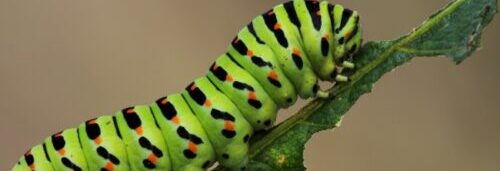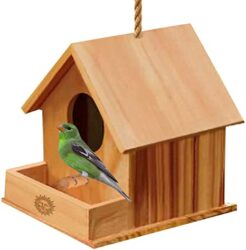Eastern Tent Caterpillar Life Cycle.
Eastern tent caterpillars are also known as the Malacosoma Americanum. Six species are in North America, the other twenty species are in Eurasia.
These caterpillars are actually social and have behavior like no other.
Eastern tent caterpillars can easily be recognized by their beautiful colors and the fact that they are so social and are out during the daytime.
They will build one large silk tent that they live in throughout the entire larvae stage. Most caterpillars do not do this. They build a bunch of small tents that they end up leaving.
The Life Cycle
The eastern tent caterpillar is the most familiar of the species. They hatch eggs in the early spring. They make their tents where they can have the first sunlight in the morning.
This is important because they need to be in the sun to keep their temperature up. If their temperature gets below 59 degrees Fahrenheit, then the caterpillar cannot digest its food.
They make different little cubby holes in their tent and each one has a different type of gap to make the temperatures in each cubby hole different.
This way the caterpillar can adjust its body temperature by changing cubby holes (compartments).
Eating Habits
These caterpillars eat many times a day. As soon as they are done eating they go back to the silk tent to bask in the sunlight and this helps to digest their food.
Eastern tent caterpillars will get others in their tent to go find food. As the caterpillars are searching the food.
They will lay down an “exploratory” pheromone trail that helps them find their way back to the tent. If he finds food, he will then lay down a “recruitment” trail that lets others know to come to eat.
It’s not clear how these trails are different for the caterpillars to know.
A big pack of these caterpillars will produce a huge number of fecal pellets. The pellets dropping from the treetops sound like rainfall.
Tent caterpillars have about six larval instars. The last one takes about eighty percent of the food. This way they are not usually noticed until the last one feeds.
It’s then that there is major damage to the tree leaves.
Growth
Caterpillars grow rather quickly. They complete the larval growth in about eight weeks. After they are grown they will look for safe places to spin their cocoons.
After around two weeks, they appear as adults. Not long after, the female will give off a pheromone that attracts males, and then mating occurs.
Usually, later that evening she will lay the eggs. And place them in a circumference around a tree branch of her choosing.
This all happens within a twenty-four-hour timeline.
Then she covers it with spumaline. This is like a moisturizer and will keep the eggs from getting dry. Then the female dies. The male will die about a week later.
Embryogenesis starts and within three weeks tiny larvae can be seen within the egg mass where they stay until the next spring.
In an outbreak of this caterpillar, there can be so many of them that they will completely destroy the leaves of thousands of acres of a forest.
The only thing that will bring an outbreak to its end is disease or parasitoids.
Sometimes they even starve to death. Bare trees will usually grow their leaves back and have no long – time damage.
But sometimes the branches or even the entire tree may be killed if they are defoliated for several seasons in a row.
Facts
Adult moths will emerge in June and July, and there is but one generation each year.
This caterpillar larva is covered with soft, long, white hair and blackish-blue in color. They have a white line down the middle of their back.
The moths are brownish-red and have two lines across their forewings.
Preferred Host
The eastern tent caterpillar is partial to the crabapple, apple, and black cherry trees.
Eastern Tent Caterpillar Control
If the tree is older and mature, they usually do not need control. But if a younger tree is getting attacked.
The larvae will be destroyed and so will the tent. In the wintertime, the egg masses can just be plucked out of the tree during the spring and summer months.
An insecticide is needed to get rid of the larvae.
So, even though the eastern tent caterpillar may have beautiful colors and be very sociable. They are still annoyed with the foliage that they destroy!



